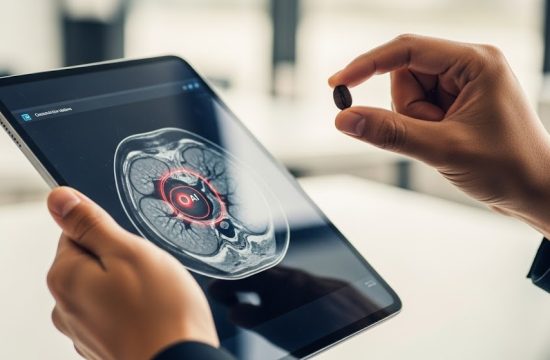It’s kind of amazing when you stop and think about it. Not long ago, the idea that a machine could actually see something and make sense of it sounded like sci-fi. Like, you’d watch it in a movie and think, yeah sure, maybe in a hundred years. But here we are — cameras and computers now recognize faces, count products on a shelf, detect if someone’s wearing a helmet in a factory, or even tell if an avocado is ripe. It’s called computer vision, and it’s changing the way a lot of modern businesses operate — not loudly, but in small, powerful ways that add up fast.
At its core, computer vision is basically teaching machines how to look at visual data — photos, videos, live feeds — and interpret them like a person would. Only they don’t blink, they don’t get tired, and they process thousands of images every second. The big difference today is how customized these systems are getting. Instead of using a generic pre-made model, companies now build their own versions of vision systems that are trained specifically for their environment, their lighting, their textures, their products. It’s not about copying what’s out there; it’s about giving the machine eyes that actually fit your world. Read more about custom computer vision development.
Manufacturing: From Spotting to Preventing
Manufacturing was one of the first to jump in. For decades, factories relied on people checking every product that rolled off the line. That’s a hard job — repetitive, exhausting, and impossible to do perfectly. Now, computer vision cameras inspect each item automatically. They catch defects instantly, down to microscopic scratches or color mismatches that a person wouldn’t even notice. Some factories go further and use vision data to predict when a problem will happen — like when a machine starts vibrating differently or the shine on a part changes slightly, which might mean something’s about to fail. It’s not just spotting issues anymore; it’s preventing them before they start.
Retail: Decoding Shopper Behavior
In retail, it’s more about understanding people. Cameras watch how shoppers move through stores, how long they stop at certain shelves, or which products they pick up and put back. It’s not creepy surveillance — at least, it shouldn’t be — it’s about figuring out what customers actually do instead of guessing. A store might find out that a popular item isn’t selling well simply because it’s placed too low or too high. Or maybe a certain section of the store always draws attention but doesn’t lead to sales. That kind of data helps make smarter choices, from product placement to layout design.
The point isn’t to replace doctors but to help them see faster and clearer. Doctors still make the call, but now they have another set of eyes.
Healthcare: The Second Set of Eyes
Healthcare is a whole other level. Here, custom vision systems are trained to look at medical images — X-rays, CT scans, MRIs — and flag tiny details that might mean disease. Some of these models can detect early-stage cancer with incredible accuracy. The point isn’t to replace doctors but to help them see faster and clearer. Doctors still make the call, but now they have another set of eyes, and those eyes don’t get tired after twelve hours on shift. Hospitals are also starting to use vision for things like patient monitoring and even checking if staff are following sanitation protocols. It’s not glamorous stuff, but it can **save lives**.
Agriculture: Precision Farming
Agriculture is another one you might not expect. Farmers are using drones with cameras to scan their fields, and vision models analyze those images to spot pests, weeds, or signs of dehydration. Instead of treating an entire field the same way, they can focus only where it’s needed. That means less water, less fertilizer, and better yields. It’s precision farming, and it’s changing how people grow food.
Logistics and City Management
Logistics companies love computer vision too. They use it to track packages, verify that labels are correct, and detect damage in real time. If a box falls off a belt, the system sees it instantly and alerts someone. Even cities are using it now — to monitor traffic flow, detect accidents faster, or manage public transport. Each one of these small tasks, when automated, **saves hours and money**.
The Custom Advantage
The reason everyone’s going custom instead of using ready-made systems is because every environment is different. Lighting in a factory is nothing like lighting in a grocery store. Dust, glare, distance — all these tiny details affect how a vision model performs. So, companies train their own models with data from their real environments.







